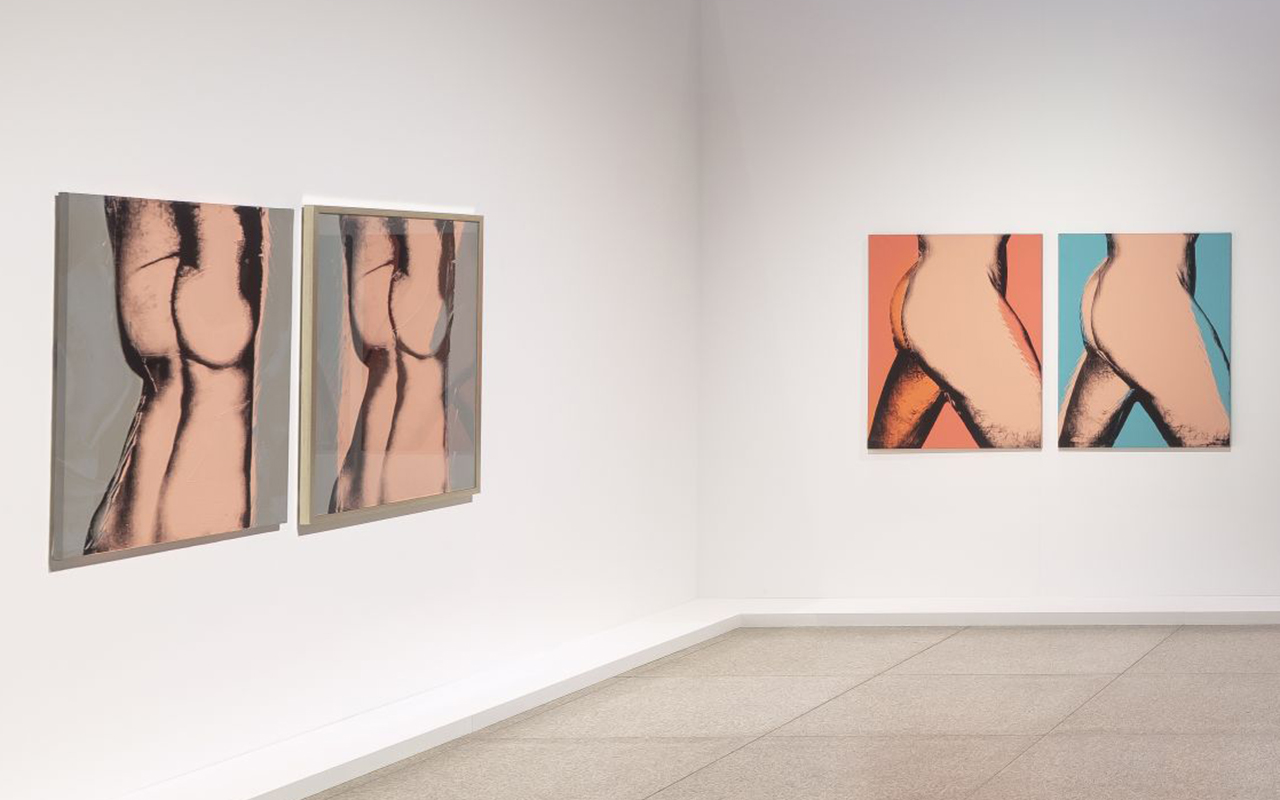BERLIN — The premise of Velvet Rage and Beauty at the Neue Nationalgalerie is that Warhol’s persistent commitment to representing the male body, long sidelined in understandings of his oeuvre, affirms that queerness was foundational to his practice. This argument informs a massive exhibition of more than 300 works that primarily study the conventionally attractive, often nude, male form across a range of media and scales.
As prolific as Warhol was, the sheer volume of work that fits into the show’s parameters is stunning. That many of these objects have either never been exhibited or have not appeared in significant surveys reflects a historical tendency to exhibit Warhol’s more explicit pieces not in the blue-chip galleries that sold his most famous work, but rather in less prestigious, often queer spaces. Yet, even as other subjects and media skyrocketed him to fame, simple drawings and photos of the male body, clothed or nude, in full or in detail on a face or phallus, may comprise the most constant through-line in his practice.
The show’s argument — that queer desire undergirds all of Warhol’s work — is hardly implicit. A timeline near the entrance maps his life against the elaboration of LGBTQ+ rights in Germany and the US, staging the recurrence of this subject matter in his practice as a political act ahead of its time. In doing so, the show seems to position itself as part of a larger project of inflecting our understanding of Warhol with his own sexuality, and understanding his art as part of a genealogy of ways of making art that mirror ways of being queer.

The exhibition falls short of realizing the promise of this direction because it largely avoids placing its objects, or larger argument, in conversation with both the Warhol canon as we have long known it and with new archival revelations about the artist — such as Jennifer Sichel’s 2018 discovery that an interview with the famously evasive artist had been edited before publication to remove myriad allusions to queerness. Instead, this show essentially cleaves the two projects, perpetuating those divides rather than facilitating their productive repair. It also presents a Platonic ideal the of male embodiment; by foregrounding one specific kind of body — young, male, conventionally attractive and proportioned, and precisely the kind of body Warhol pursued — the show almost loses the thread of fungibility, dissimulation, irony, and play for which Warhol is celebrated, and which provide the germinal node of queerness in his work. In bringing all manner of postmodern representational strategies to bear on a form that is, in the end, a single kind of body, it suggests a side of Warhol that is gay in its committed focus on other men, but lacking the slippage and multiplicity that characterizes the queer.
The exception to the show’s (and Warhol’s) almost singular focus on an idealized male body is a two-part series of portraits of trans women of color composed of photographs and the same images enlarged, screen printed, and overpainted. In a departure from the artist’s more familiar screen-printed images, in which his application and choice of colors often ironized or dislocated his subjects, these are strikingly flattering, their palettes refusing the comic, grotesque, often dissonant juxtapositions found elsewhere. Warhol approaches the faces of these women — exceptions to this show on both raced and gendered terms — with care, rather than the desire that suffuses the exhibition’s other works. It is perhaps in giving us both the photos and screen prints of these and a few other pieces that Velvet Rage and Beauty truly hits the mark: It provides a glimpse into the potential of Warhol’s queer politics, while making clear that perhaps the most queer aspects of his oeuvre are those that evaded his own awareness.


Andy Warhol: Velvet Rage and Beauty continues at the Neue Nationalgalerie (Potsdamer Strasse 50, Berlin, Germany) through October 6. The exhibition was curated by Klaus Biesenbach, director of the Neue Nationalgalerie, with Lisa Botti as co-curator and curatorial assistance and project management by Nikola Richolt.

